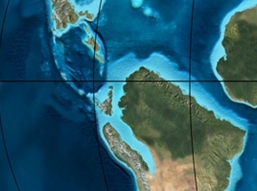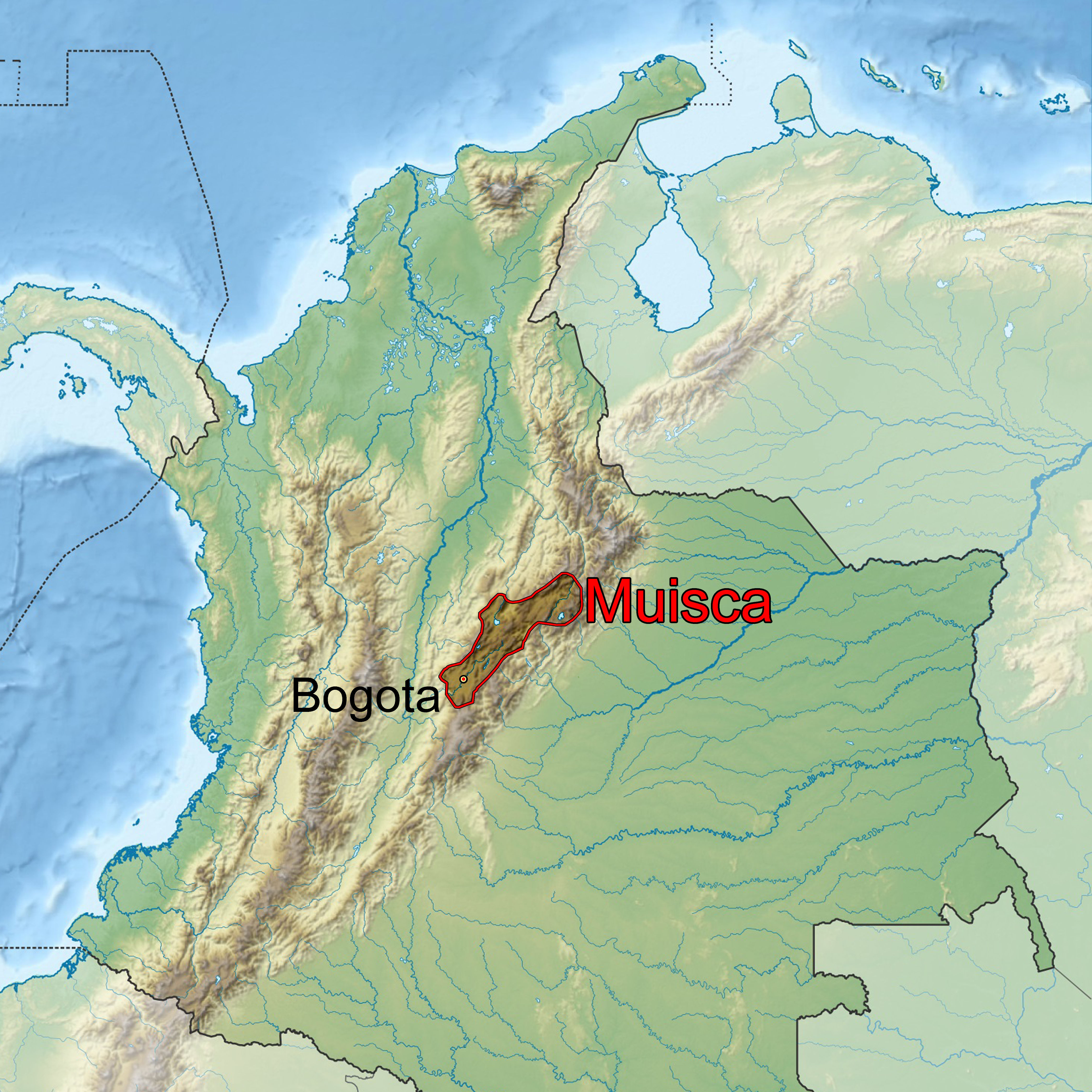|
Duitama
Duitama () is a city and municipality in the department of Boyacá. It's the capital of the Tundama Province. Duitama is located northeast of Bogotá, the capital of Colombia and northeast of Tunja, the capital of Boyacá. In 2023 Duitama had an estimated population of 131,591. Etymology Duitama has existed since pre-Columbian times, when the Muisca inhabited the hills surrounding a former lake in the valley. The original name of Duitama was "Tundama", named after ''cacique'' Tundama. The name of Duitama means "to me the tribute" in muyskkubun (Muisca language). In its beginnings, Duitama corresponded to a Muisca village ruled by the cacique Tundama, a word that changed for Duitama, absolute and powerful lord that he had as bosses tributaries to the Onzaga, Soatá, Chitagoto, Susacón or Cabita, Icabuco, Lupachoque, Sátiva, Tutazá and Cerinza caciques. The natives lived in bohíos, looking for the heights of the plain of the Indians, Tigua, today hills of La Milagro ... [...More Info...] [...Related Items...] OR: [Wikipedia] [Google] [Baidu] |
Tundama
Tundama or Saymoso (15th century – late December 1539 in Duitama) was a ''cacique'' of the Muisca Confederation, a loose confederation of different rulers of the Muisca who inhabited the central highlands (Altiplano Cundiboyacense) of the Colombian Andes. The city of Tundama, currently known as Duitama and part of the Tundama Province, Boyacá, were named after the ''cacique''. Tundama ruled over the northernmost territories of the Muisca, submitted last by the Spanish conquistadores. Tundama was killed late December 1539 with a large hammer by Spanish conquistador Baltasar Maldonado. His successor, ''Don Juan'' was killed shortly after, ending the reign of the Muisca in the New Kingdom of Granada, the name for present-day Colombia and a part of Venezuela in the Spanish Empire. Knowledge about Tundama has been compiled by scholar Lucas Fernández de Piedrahita. Background In the time before the Spanish conquest of central Colombia, there were several main rulers and ... [...More Info...] [...Related Items...] OR: [Wikipedia] [Google] [Baidu] |
Muisca Confederation
The Muisca Confederation was a loose confederation of different Muisca rulers (''zaques'', ''zipas'', ''iraca'', and ''tundama'') in the central Andes, Andean highlands of what is today Colombia before the Spanish conquest of the Americas, Spanish conquest of northern South America. The area, presently called Altiplano Cundiboyacense, comprised the current departments of Colombia, departments of Boyacá Department, Boyacá, Cundinamarca Department, Cundinamarca and minor parts of Santander Department, Santander. According to some List of Muisca scholars, Muisca scholars the Muisca Confederation was one of the best-organized confederations of tribes on the South American continent. Other Historian, historians and anthropologists, however, such as Jorge Gamboa Mendoza, attribute the present-day knowledge about the confederation and its organization more to a reflection by Spanish chroniclers who predominantly wrote about it a century or more after the Muisca were conquered and propo ... [...More Info...] [...Related Items...] OR: [Wikipedia] [Google] [Baidu] |
Altiplano Cundiboyacense
The Altiplano Cundiboyacense () is a high plateau located in the Eastern Cordillera of the Colombian Andes covering parts of the departments of Cundinamarca and Boyacá. (Do not confuse with The Altiplano or the Altiplano Nariñense, both further south.) The altiplano corresponds to the ancient territory of the Muisca. The Altiplano Cundiboyacense comprises three distinctive flat regions; the Bogotá savanna, the valleys of Ubaté and Chiquinquirá, and the valleys of Duitama and Sogamoso. The average altitude of the altiplano is about above sea level but ranges from roughly to . Etymology ''Altiplano'' in Spanish means "high plain" or "high plateau", the second part is a combination of the departments Cundinamarca and Boyacá. Geography The limits of the Altiplano are not strictly defined. The high plateau is enclosed by the higher mountains of the Eastern Ranges, with the Sumapaz mountains in the south and Chingaza to the east. The Tenza Valley is locate ... [...More Info...] [...Related Items...] OR: [Wikipedia] [Google] [Baidu] |
Spanish Conquest Of The Muisca
The Spanish conquest of the Muisca took place from 1537 to 1540. The Muisca people, Muisca were the inhabitants of the central Andes, Andean highlands of Colombia before the arrival of the Spanish conquistadors. They were organised in a loose Muisca Confederation, confederation of different Muisca rulers, rulers; the ''zipa, psihipqua'' of Bacatá, Muyquytá, with his headquarters in Funza, the ''zaque, hoa'' of Tunja, Hunza, the ''iraca'' of the sacred City of the Sun Sogamoso, Sugamuxi, the Tundama of Duitama, Tundama, and several other independent ''caciques''. The most important rulers at the time of the conquest were ''psihipqua'' Tisquesusa, ''hoa'' Quemuenchatocha, Eucaneme, ''iraca'' Sugamuxi and Tundama in the northernmost portion of their territories. The Muisca were organised in small communities of circular enclosures (''ca'' in their language Chibcha language, Muysccubbun; literally "language of the people"), with a central square where the ''Muisca architecture, boh ... [...More Info...] [...Related Items...] OR: [Wikipedia] [Google] [Baidu] |
Iraca
The ''iraca'', sometimes spelled ''iraka'',Ocampo López, 2013, Ch.12, p.77Ocampo López, 2013, Ch.14, p.85 was the ruler and high priest of Sugamuxi in the confederation of the Muisca who inhabited the Altiplano Cundiboyacense; the central highlands of the Colombian Andes. ''Iraca'' can also refer to the Iraka Valley over which they ruled. Important scholars who wrote about the ''iraca'' were Lucas Fernández de Piedrahita, Alexander von Humboldt and Ezequiel Uricoechea. Background In the centuries before the Spanish conquistadores entered central Colombia in the 1530s, the valleys of the Eastern Ranges were ruled by four main leaders and several independent ''caciques''. The northern territories were ruled by the '' zaque'' from Hunza, the present-day capital of Boyacá department and the southern area under the reign of the ''zipa'', based in Bacatá, currently known as the Colombian capital Bogotá. Other important rulers were the ''iraca'' and the ''cacique'' Tund ... [...More Info...] [...Related Items...] OR: [Wikipedia] [Google] [Baidu] |
Boyacá Department
Boyacá () is one of the thirty-two departments of Colombia, and the remnant of Boyacá State, one of the original nine states of the "United States of Colombia". Boyacá is centrally located within Colombia, almost entirely within the mountains of the Cordillera Oriental, Colombia, Eastern Cordillera to the border with Venezuela, although the western end of the department extends to the Magdalena River at the town of Puerto Boyacá, Boyacá, Puerto Boyacá. Boyacá borders to the north with the Department of Santander Department, Santander, to the northeast with the Bolivarian Republic of Venezuela and Norte de Santander, to the east with the departments of Arauca Department, Arauca and Casanare Department, Casanare. To the south, Boyacá borders the department of Cundinamarca Department, Cundinamarca and to the west with the Department of Antioquia Department, Antioquia covering a total area of . The capital of Boyacá is the city of Tunja. Boyacá is known as "The Land of ... [...More Info...] [...Related Items...] OR: [Wikipedia] [Google] [Baidu] |
Tundama Province
The Tundama Province is a province of the Colombian Department of Boyacá. The province is formed by 9 municipalities. Etymology The province is named after ''cacique'' Tundama Tundama or Saymoso (15th century – late December 1539 in Duitama) was a ''cacique'' of the Muisca Confederation, a loose confederation of different rulers of the Muisca who inhabited the central highlands (Altiplano Cundiboyacense) of the Co ....Etymology Tundama - Excelsio.net Subdivision The Tundama Province comprises 9 municipalities:Provincias de Boyacá/ref> References ...[...More Info...] [...Related Items...] OR: [Wikipedia] [Google] [Baidu] |
Paipa
Paipa is a town and municipality in the Tundama Province, a part of the Colombian department of Boyacá. Paipa borders Duitama, Firavitoba, Tibasosa, Sotaquirá and Tuta.Official website Paipa Geography Paipa is located 15 km west of and to the northeast of Tunja, the capital of the department, in the Cordillera Oriental (Eastern Ranges) of the Colombian |
Zaque
When the Spanish arrived in the central Colombian highlands, the region was organized into the Muisca Confederation, which had two rulers; the ''Zipa'' was the ruler of the southern part and based in Muyquytá. The ''Zaque'' was the ruler of the northern area and based in Hunza, known today as Tunja. Organization ''Zipa (Psihipqua)'' and ''Zaque (Hoa)'' were the titles given to these rulers of the ancient confederation. Neither exercised absolute power, not rigid or strict control over those to whom they owed their power, so that they can be considered kings. However, these positions of power were of great honor and were surrounded by a rather elaborate ceremony. The position of the ''Zipa'' was such that not even the members of the nobility dared to look him in the face, and it is said if the ''Zipa'' needed to spit, someone would hold out a piece of rich cloth for him to spit on, because it would be sacrilegious for anything so precious as his saliva to touch the ground. Wh ... [...More Info...] [...Related Items...] OR: [Wikipedia] [Google] [Baidu] |
Zipa
When the Spain, Spanish arrived in the central Colombian highlands, the region was organized into the Muisca Confederation, which had two rulers; the ''Zipa'' was the ruler of the southern part and based in Funza, Muyquytá. The ''Zaque'' was the ruler of the northern area and based in Tunja, Hunza, known today as Tunja. Organization ''Zipa (Psihipqua)'' and ''Zaque (Hoa)'' were the titles given to these rulers of the ancient confederation. Neither exercised absolute power, not rigid or strict control over those to whom they owed their power, so that they can be considered kings. However, these positions of power were of great honor and were surrounded by a rather elaborate ceremony. The position of the ''Zipa'' was such that not even the members of the nobility dared to look him in the face, and it is said if the ''Zipa'' needed to spit, someone would hold out a piece of rich cloth for him to spit on, because it would be sacrilegious for anything so precious as his saliva to to ... [...More Info...] [...Related Items...] OR: [Wikipedia] [Google] [Baidu] |
Floresta, Boyacá
Floresta is a town and municipality in Boyacá Department, Colombia, part of the Tundama Province, a subregion of Boyacá. Floresta is situated on the Altiplano Cundiboyacense in the Eastern Ranges of the Colombian Andes. It borders Santa Rosa de Viterbo, Cerinza and Betéitiva in the north, in the east Busbanzá and Corrales in the west Santa Rosa de Viterbo and Nobsa in the south. History Before the Spanish conquest of the highlands of Colombia, the area of Floresta was inhabited by the Muisca, organized in their Muisca Confederation. In those days Floresta, together with Santa Rosa de Viterbo, was called Tobasía which is still the name of a corregimiento of the village. Tobasía was ruled by a ''cacique'' loyal to the ruler of Tundama, present-day Duitama. Modern Floresta was founded in 1818, three years before the independence of Colombia from the Spanish Empire. Floresta means "between the flowers". [...More Info...] [...Related Items...] OR: [Wikipedia] [Google] [Baidu] |
Muisca People
The Muisca (also called the Chibcha) are indigenous peoples in Colombia and were a Pre-Columbian culture of the Altiplano Cundiboyacense that formed the Muisca Confederation before the Spanish colonization of the Americas. The Muisca speak Muysccubun, a language of the Chibchan language family, also called ''Muysca'' and ''Mosca''. The first known contact with Europeans in the region was in 1537 during the Spanish conquest of New Granada. In New Spain, Spanish clerics and civil officials had a major impact on the Muisca, attempting to Christianize and incorporate them into the Spanish Empire as subjects. Postconquest Muisca culture underwent significant changes due to the establishment of the New Kingdom of Granada. Sources for the Muisca are far less abundant than for the Aztec Empire of Mesoamerica or the Inca Empire and their incorporation to the Spanish Empire during the colonial era. In the New Kingdom of Granada and into the colonial era, the Muisca became " ... [...More Info...] [...Related Items...] OR: [Wikipedia] [Google] [Baidu] |






